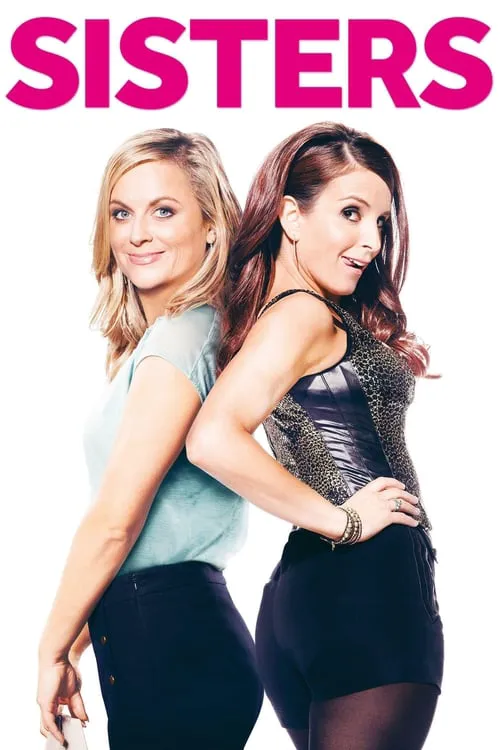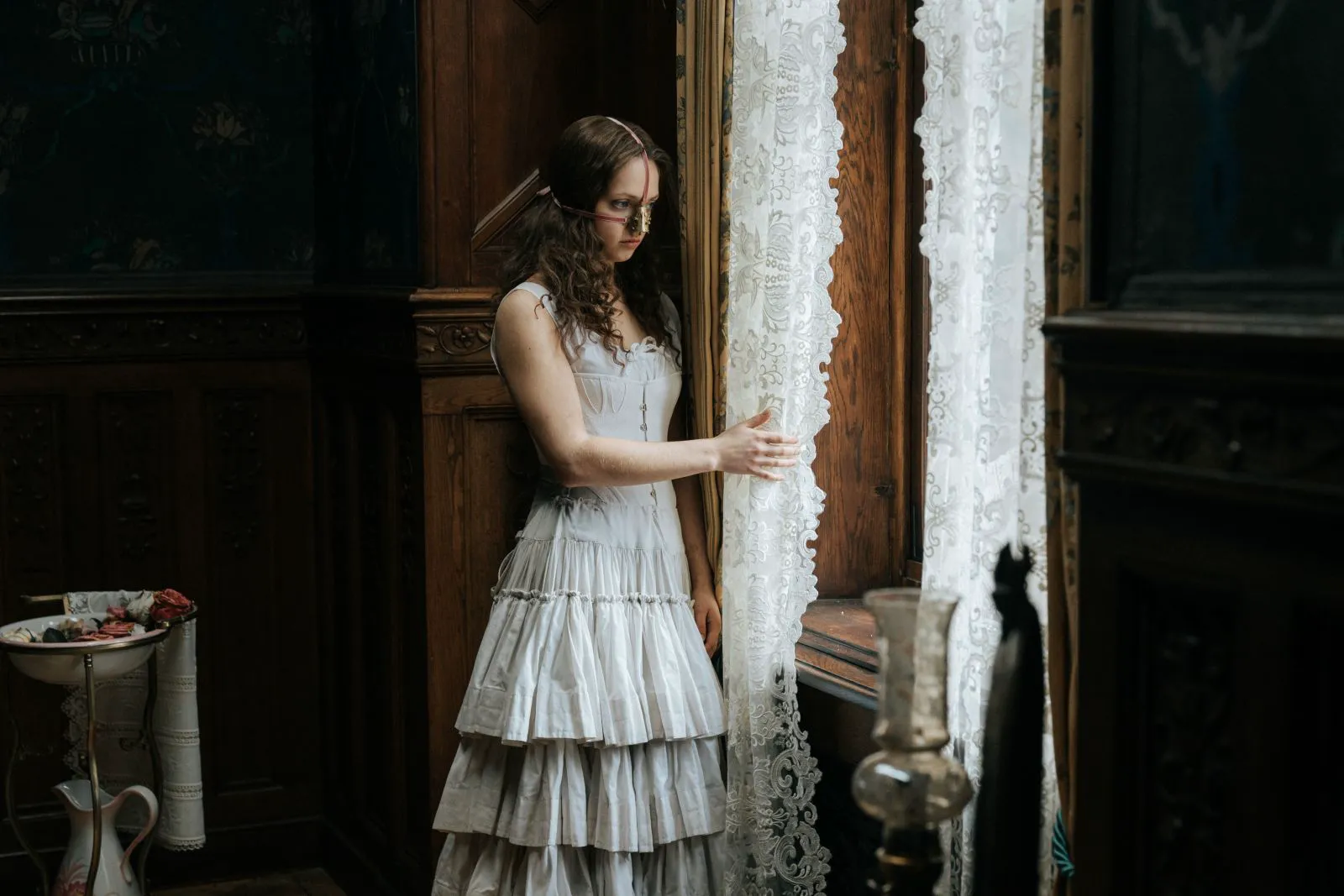Sisters

Plot
The comedy film 'Sisters' stars Amy Poehler and Tina Fey as Maura Ellis and Kate Ellis, two estranged sisters in their mid-30s. The story follows the sisters as they embark on a week-long journey back to their childhood home in suburban Chicago, which their parents have scheduled for an open house and potential sale. The sisters' relationship has been strained due to disagreements and their distinct upbringing. Maura, the more conservative and organized sibling, has become a suburban housewife, whereas Kate, the rebellious and eccentric sibling, has pursued a career in music and has a more carefree attitude. As a result, they have disconnected over the years. Upon receiving the news about the house sale, Maura and Kate realize they still have a week to spend together at their family home, a unique opportunity to rectify the strained bond between them. They each take a week-long break from work – an enforced period of time where they are forced to clean out their childhood bedrooms and reminisce together. At the family home, they find a plethora of items from their past, including teenage photo albums, family heirlooms, and the eccentric decorations they had created to express their individuality. As they rummage through the items, they come across each other's cherished belongings and secrets, unlocking fragments of their shared past and common experiences. Maura, in a nostalgic frenzy, reveals a hidden stash of childhood items including old school work, photos of their parents' infamous party days, as well as her deceased brother's football trophies, which bring up a mix of emotions in both sisters. Maura uses the nostalgia as an opportunity to cherish memories of a better time in her life and make amends with Kate. In the process, they unknowingly sabotage their parents' house plans by removing fixtures, selling or disposing some belongings, and destroying damaged items that cause them emotionally. This has the unintended effect of irritating their parents as well as Kate's erratic and unorganized behavior making their relationship slightly tense. Kate reveals she secretly had an incredible childhood friend, Brigitte, who the family eventually lost touch with, due to Maura becoming a 'perfect' suburban housewife. Kate resents Maura for abandoning their free-spirited attitude, leaving her own footprint to establish normal domestic values. In a conversation at the local bar with their childhood friend, Kate confronts how Maura disapproved of Brigitte, outgrew her weird friendships, and finally adapted to their parents' influential side of the household. This throws a wrench in Kate's emotionally charged reasons for always shunning her successful-in-high-school sister, she starts to appreciate their identical upbringings. Both sisters also make up for a life they momentarily possessed on stage during their college days as a sisterly punk band, "Ghosts," prompting each other's admiration. Meanwhile, the parents' desperation to make a profit off their house increases, given the pressure to sell before the prospective buyer decides their mind on the house. As their week comes to an end, Maura and Kate give the house a 'rip-roaring' gesture of defiance. While Maura tends to help Kate tidy up the house before it sells, they still continue experimenting their unbridled identities from back when they were a unique teenage gang dominating the neighborhood. Kate reconciles to settling down while Maura understands Kate and all her thoughts.
Reviews
Owen
When you think this is just a 32-year-old De Palma's earliest homage to his idol Hitchcock, the last 30 minutes of the story genuinely tell the audience that if he were just imitating Hitch, he wouldn't have become a master director later on. You can see the shadows of "Rope," "Rear Window," and "Psycho," but De Palma gradually established his own style on the basis of homage by using some of his most representative image techniques (one of the most exaggerated uses of split-screen in his works, and possibly the best comprehensive effect). It's visually and aurally enjoyable, though I really like it...
Norah
Palma's sixth feature film, still somewhat immature, but already showing promise. The story can be seen as a fusion of "Psycho" and "Rear Window." At this point, Palma's work is not just a blind imitation of Hitchcock. With a high degree of overlap in visual and auditory techniques combined the core themes, Palma is starting to create a signature style all his own: split-screen. A kind of alternative to parallel editing to allow for the dramatic tension to unfold more fiercely in certain contexts. Moreover, the opening satire of television media and the scene where a corpse sits in broad daylight at the end are both proof of Palma's authorial voice, but at this point he is still not what one would consider a 'complete' filmmaker, because...
Jude
De Palma's cinematic techniques were already quite polished from his early days. A few instances of split-screen storytelling are stunning, and the crazed, freak show-esque black and white "memories" are also quite captivating. It's a pity that the suspense and twists surrounding the female neighbor's attempt to prove the murder are so anti-intellectual. The settings are so lax that the insane asylum is unbelievable, and the villains are so derelict in their duties that it’s hard to watch. There’s no scientific intention for crime-solving from the police and detectives, and the demonization of mental illness and patients is off-putting. This movie isn’t interesting enough for me to abandon common sense. By the end, everyone is annoying. Doesn't De Palma know about luminol reactions? It's so crude; they might as well have set it in the 18th century. Fortunately, the surrealism of the ending scene pulls it back a bit...
Payton
Palma's first Hitchcock imitation, marking the beginning of his journey where audiovisual language outweighs narrative logic. The witness setting is reminiscent of "Eyewitness," "Body Double," and "Dressed to Kill." The core resembles "Psycho," with the female reporter's telescope peering akin to "Rear Window," and the sofa concealing a corpse just like "Trouble with Harry." The opening sequence, with the "Peeping Tom"-style TV opening, builds suspense. The conjoined twins' mockumentary, along with hypnosis to fabricate memories and reveal the truth, serves a dual purpose effectively. The two split-screen sequences during the murder are full of tension. (8.0/10)
Ivy
One of the most memorable scenes is when the protagonist, having just witnessed a harrowing murder, comes downstairs and encounters her mother. She is then trapped in a car, forced to endure her mother's long-winded musings on life. This is a rare "safe moment" in a thriller, and although brief, it is essential. It pulls the protagonist from a perilous, mysterious world back to the ordinary, everyday routine. It allows "normality" to feel like a "grace," offering a comforting moment of solace to both the audience and the character.
Articles
1. Sisters - My sister is the uncertainty in the dark

The Lingering Echo of September: When Sisterhood Blurs RealityHave you ever imagined possessing such a deep connection with someone that it borders on telepathy, a bond as profound as the mystical lin
2. A fairy tale is a lie, but there's a hint in it: a review of the Norwegian body horror "Good Madam"

A Twisted Take on Cinderella: Unveiling the Dark Humor of “Ugly Sisters”“Ugly Sisters” (original title “Syge Søstre”) isn’t your typical fairytale. Director Emily Blichfeldt reimagines the classic Cin
Recommendations




